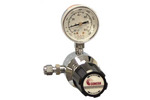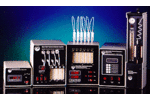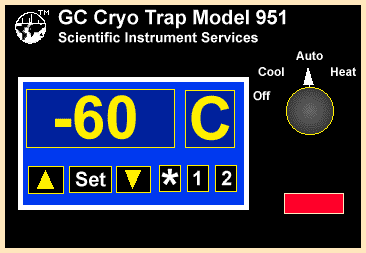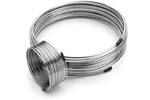- ▶
- Heaters/Source
- ▶
- Agilent Heaters and SensorsMass Spectrometry, Scientific Supplies & ManufacturingScientific Instrument Services 5973 Source Heater Tamper Resistant Allen Wrench 5973/5975 Quad Sensor 5985 Source Heater Assembly Agilent Interface Heater Assembly 5971 Interface Heater

- ▶
- Reference Material on InstrumentationArticle - A High Temperature Direct Probe for a Mass Spectrometer Design of a Direct Exposure Probe and Controller for use ona Hewlett-Packard 5989 Mass Spectrometer SIS AP1000 AutoProbe™ SIS AP2000 AutoProbe™ - Description of System HPP7: Direct Probe Electronics Console HPP7: Direct Probe for the Agilent (HP) 5973/5975 MSD HPP7: HP Direct Probe Application Notes HPP7: Installation Directions for the Direct Probe HPP7: Side Cover for the HP 5973 MSD HPP7: Support HPP7: Probe Inlet System for the Agilent (HP) 5973 and 5975 MSD with Automatic Indexed Stops HPP7: Theory of Operation of the Direct Probe and Probe Inlet System Direct Thermal Extraction Thermal Desorption Application Notes Environmental Thermal Desorption Application Notes Food Science Thermal Desorption Application Notes Forensic Thermal Desorption Application Notes GC Cryo-Trap Application Notes Headspace Application Notes Purge & Trap Thermal Desorption Application Notes Theory of Operation of the AutoDesorb® System AutoDesorb Notes for SIS Dealers Adsorbent Resin Application Notes Installation of the Short Path Thermal Desorption System on Agilent (HP) and Other GCs Installation of the Short Path Thermal Desorption System on a Varian 3400 GC AutoDesorb® System Development Team Thermal Desorption Applications and Reference Materials Installation of the Short Path Thermal Desorption System - TD5 Part I - Design & Operation of the Short Path ThermalDesorption System Installation Instructions for the Model 951 GC Cryo-Trap on the HP 5890 Series GC Installation Instructions for the Model 961 GC Cryo-Trap on the HP 5890 Series GC Operation of the Model 951/961 GC Cryo-Trap SIS GC Cryo Traps - Theory of Operation NIST/EPA/NIH Mass Spectral Enhancements - 1998 version (NIST98) SIMION 3D Ion Optics Class Mass Spectrometer Source Cleaning Methods MS Tip: Mass Spectrometer Source Cleaning Procedures Mass Spec Source Cleaning Procedures Micro-Mesh® Abrasive Sheets Research Papers Using New Era Syringe Pump Systems EI Positive Ion Spectra for Perfluorokerosene (PFK) Cap Liner Information How do I convert between fluid oz and milliliters? Which bottle material should I choose? Which bottle mouth should I choose? The Bottle Selection Guide CGA Connections for Gas Tanks Chemical Reaction Interface Mass Spectrometry (CRIMS)

- Instrument Tubing
- ▶
- Gas RegulatorsModel 3530 Series - Single Stage Purity Brass Regulator Model 3510 Series - Single Stage High Purity Stainless Steel Regulators Model 3120 Series - Dual Stage Purity Brass Regulator Model 3810 Series - Dual Stage High Purity Stainless Steel Regulators Tescom Gas Line Regulators 3420 Series Tescom Gas Line Regulators 3450 Series Concoa In-Line Regulators Model 304 Series Concoa In-Line Regulators Model 324 Series

- TD
- ▶
- AccessoriesTD Supply Kit Desorption Tubes Adsorbent Resins Desorption Tube Needles Desorption Tube Seals Desorption System Fittings GC Cryo-Trap Extraction Cell TD Sample Loader Prepacked, Conditioned Desorption Tubes Desorption Tube Packing Accessories Stainless Steel Purge Heads Injection Port Liners Tenax TA Poster TD Application Notes Customer Service

- GCColumns Fused Silica Tubing Instrument Tubing Injection Port Liners Septa by Manufacturer SIS GC Cryo-Traps Ferrules Valves Swagelok® Fittings Pyrolysis Probe Accessories Gas Generators Gas Regulators Gas Purifiers and Filters Syringes SGE MEPS™-Micro Extraction by Packed Sorbent Purge and Trap System SGE SilFlow™ Stainless Steel Micro-Fluidic Platform Accessories NIST GC RI Library Other GC Supplies Catalog Page D1

- ▶
- GC Cryo-traps
- LiteratureApplication Notes Adsorbent Resins Guide Mass Spec Tips SDS Sheets FAQ MS Calibration Compound Spectra Manuals MS Links/Labs/ Organizations MS Online Tools Flyers on Products/Services Scientific Supplies Catalog About Us NextAdvance Bullet Blender® Homogenizer Protocols Micro-Mesh® Literature Instrumentation Literature Agilent GC/MS Literature SIS News / E-Mail Newsletter NIST MS Database - Update Notifications

- ▶
- SIS GC Cryo Traps - Theory of Operation (This Page)
New Programmable Cyro-cooling and heating trap for the Cryo-focusing of volatiles and semivolatiles at the head of GC capillary columns.
The Cryo-Trap consists of a small heating/cooling chamber which is 3/4" in diameter and 5" long which mounts to the bottom of the GC injection port just inside the GC oven. In the center of the chamber is a small stainless steel capillary through which the capillary column freely passes. Capillary columns up to megabore (0.53 mm I.D.) diameters can be used. Around the stainless steel capillary tube a heating coil is wound to provide for the rapid heating of the capillary tube. A thermocouple provides accurate measurement of both the cooling and heating temperatures. Either liquid CO2 or liquid nitrogen for cooling is introduced into the Cryo-Trap (Cooling Gas In), and is exhausted through the outlet (Gas Out). The exhaust can either be vented into the GC Oven or a tube can be attached to vent the cooling gas external to the GC.

The control of the Cryo-Trap is provided via an independent Cryo-Trap Controller provided with the system. Both the Cryo-Cooling and heating temperatures are set via this digital temperature controller. The system can be used either manually to switch between cooling and healing or can be operated automatically via an input signal from a controlling device.

For the cooling operation the cooling gas is pulsed into the chamber. Liquid CO2 will cool down to -70 °C. Liquid nitrogen (LN2) will cool down to -180 °C. The cooling temperature can be set to any temperature between room temperature and the lower limits of the cooling gas. The temperature controller will pulse the cooling gas into the chamber to accurately control the temperature to the value you set. The thermocouple provides the feedback to both regulate the temperature as well as display the GC Cryo-Trap temperature on the display of the temperature controller. The electronics of the CO2 and liquid nitrogen versions are different due to the different cooling properties of the liquid CO2 and liquid nitrogen. Also the Cryo-Traps themselves are different for both models. Therefore parts are not interchangeable between the two models and the particular model can only be used with the cooling gas for which it was designed.
Each GC Cryo-Trap System consists of the GC Cryo Trap itself which goes inside the GC oven as well as the Dual temperature controller. When ordering it is also necessary to purchase a GC Cryo-Trap installation package to fit you particular model of GC. See the Ordering Information page for details.



